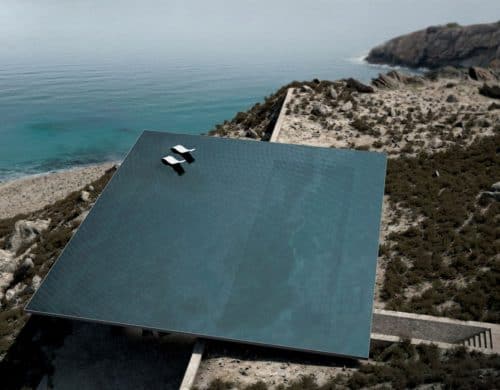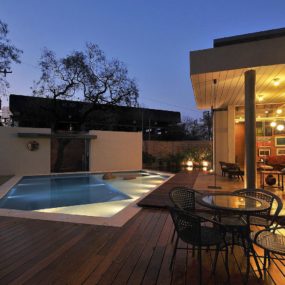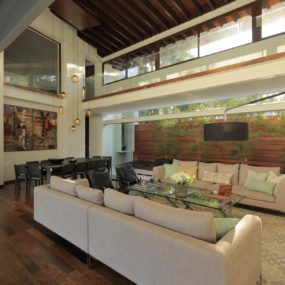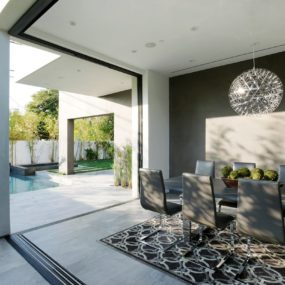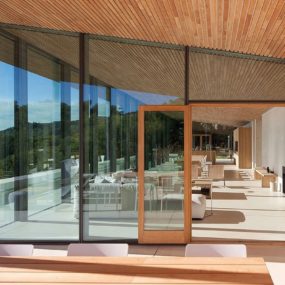
Arquitectura en Estudio and Natalia Heredia received a brief from their client in Villeta, Colombia – a 1-1/2 hour drive to the west of Bogota – to design and build a home for them on the top of a hill, 967m above sea level in a location that is hot and dry throughout the year. The land was steep, starting at the top of the hill and traveling down to the El Cojo stream, the home was to include 3 bedrooms, a studio, service and social areas as well as a terrace and swimming pool – all within a 550m2 area. The client’s also wanted their home to be completely exposed to the environment when they where home, but completely buttoned up when they where away. The resulting Casa 7A is all that and so much more.

Casa 7A revolves around the concept of outdoor living to the extent that an Acacia tree is planted in the heart of the home between the living and dining areas with an open air skylight above to accommodate its growth over the years to come. As the tree grows its leaves will create a natural shade canopy to those below.
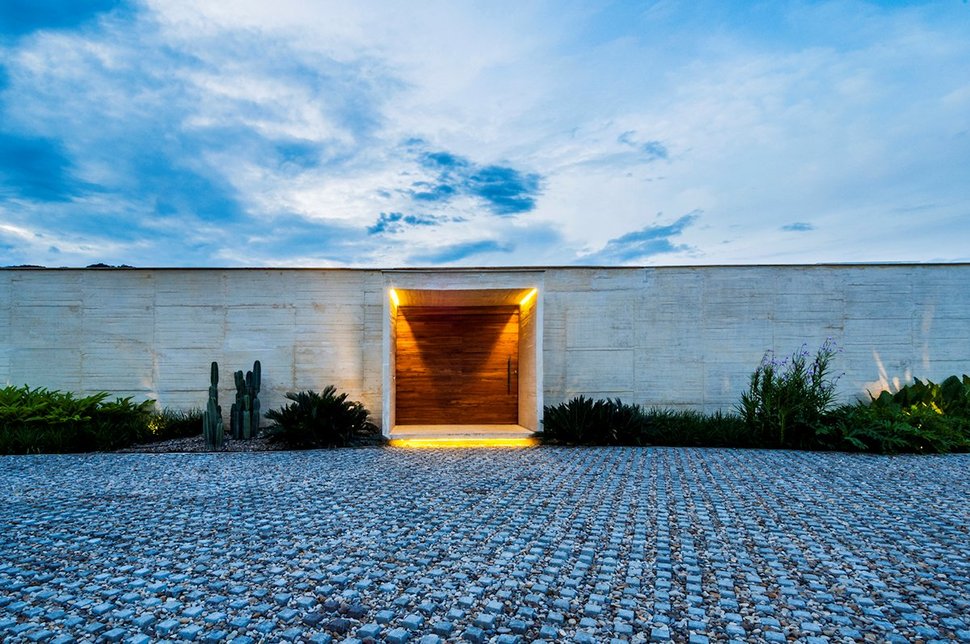
Even though the home is wrapped in open air walls when the clients are home, the entry presents a continual closed and private facade.
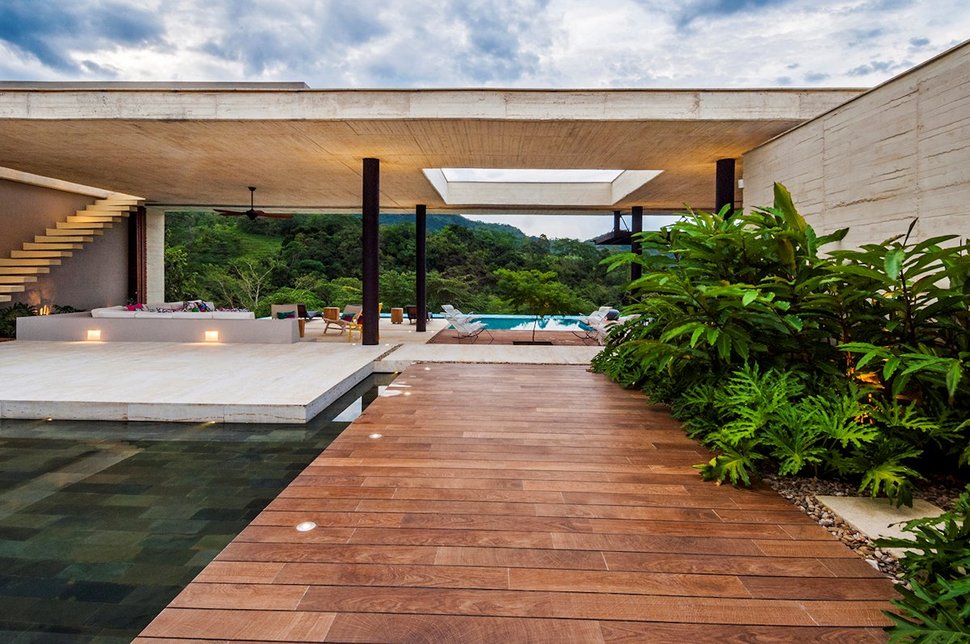
Once through the entry doors the open air lifestyle is immediately apparent. In fact the foyer is a wood ramp that travels past a water element on one side and lush plantings on the other before arriving at the Acacia tree straight ahead.

While the home is not symmetrical, the architects did line up the front door with the Acacia tree and the open air skylight above. In the evenings the reflection of these elements reinforces the idea of symmetry, even if its just for this central portion of the social zone
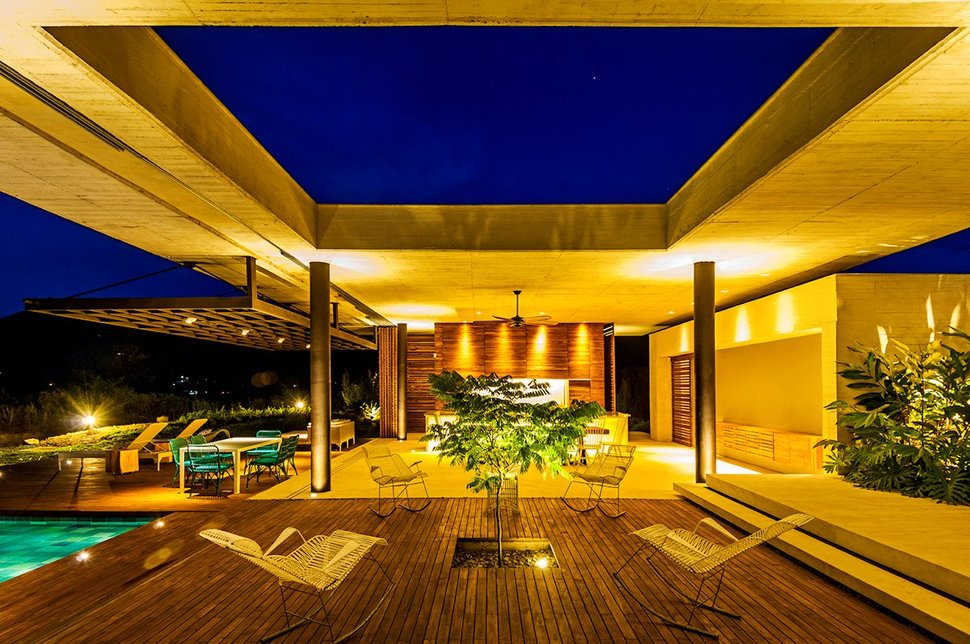
The Acacia tree marks the centre of the social zone and the conjoining of two main axes – one of the kitchen and dining with the living area and the of the outdoor pool and deck with the entry ramp, water element and plantings.
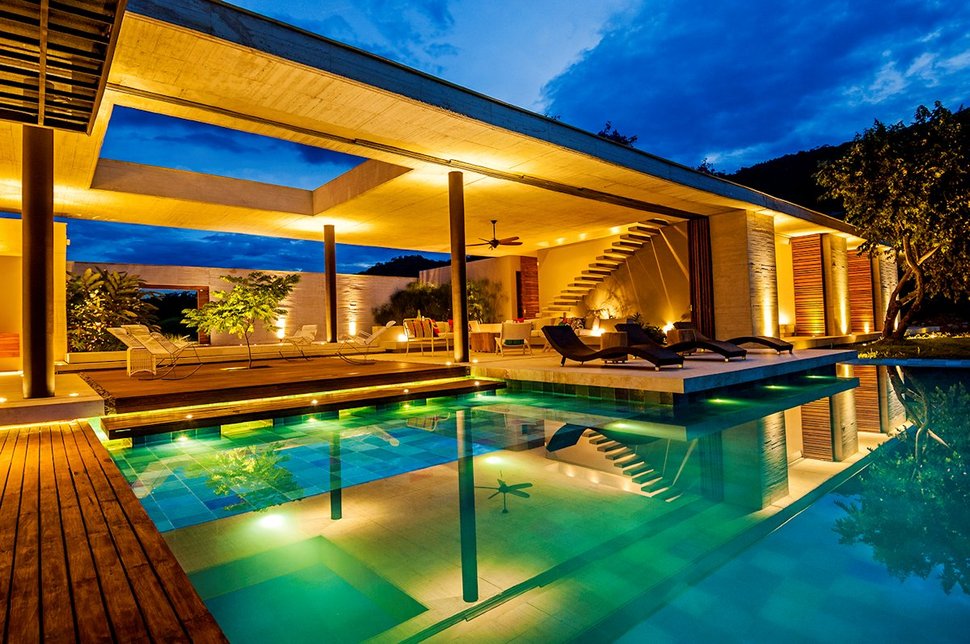
From the viewpoint of the pool, the Acacia tree connects the various plantings, making it seem as though the social zone of the home is one large outdoor terrace – and in some ways it is.

Even from inside the home, the connectivity to the outdoors is complete with the panoramic mountainscape views permeating the open-air walls – when the wood screen panels are open that is.
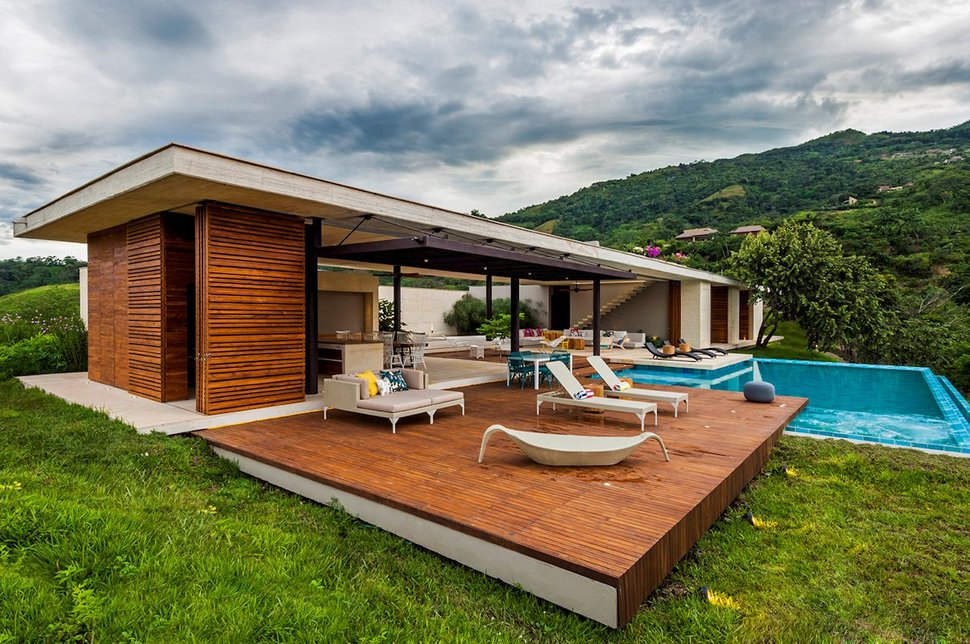
When the wood screens are open, it’s hard to imagine Casa 7A closed up tight.
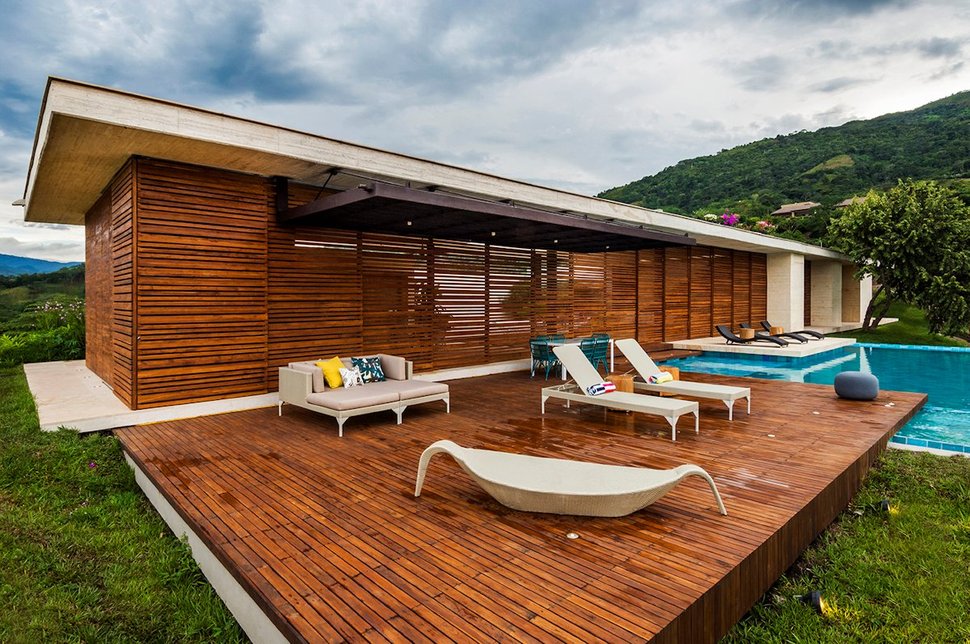
But when the client is away, closed up tight is exactly what Casa 7A is. The wood screens slide and lock into place and only the open-air skylight remains as a void.
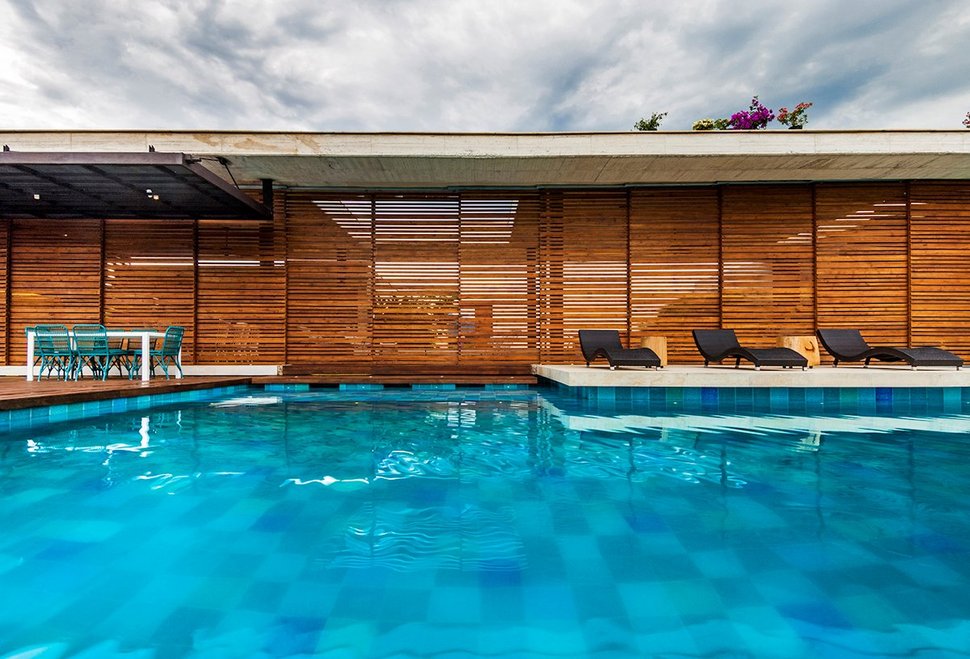
The wood screen panels that contain the home are made from sustainable Teak wood as are most of the wood furnishings and wood floor sections such as the front entry and the Acacia Tree zone. 5 and 10cm modules are used within the panels as well as in the timber formwork for the concrete.
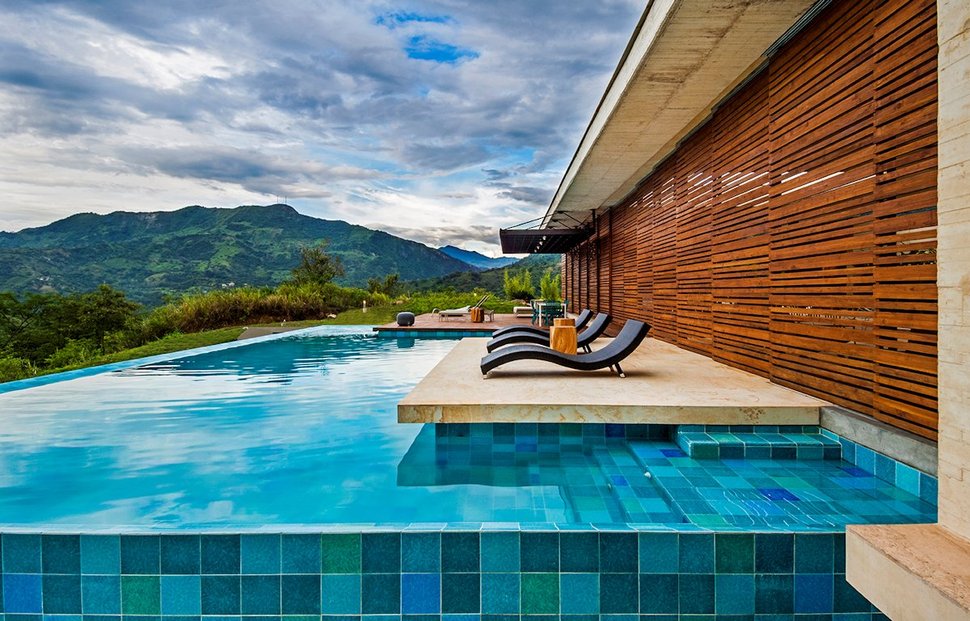
Other materials used in the construction of Casa 7A are ocre tinted in situ concrete made from a mix of white cement and Ambalema sand, sandstone floors and 20x20cm tiles detoned and hand painted in shades of blue and green.
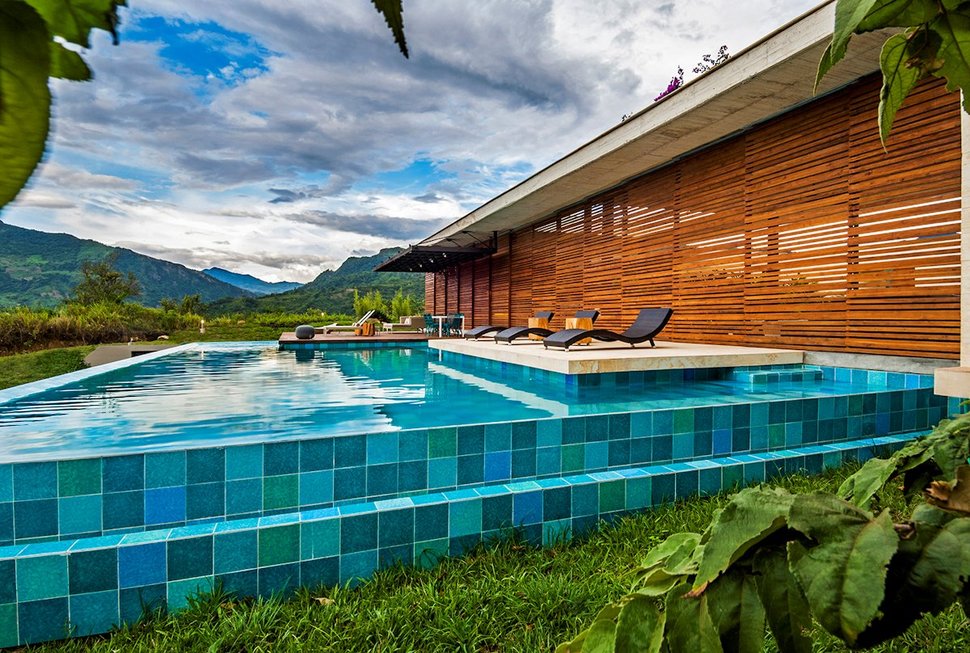
The shades of blue and green chosen for the tiles where pulled directly from the surrounding landscape, creating a pixelated abstract version of the views. The tiles create a cool contrast to the warm wood tone of the closed Teak panels, but when the panels are open the contrast disappears.
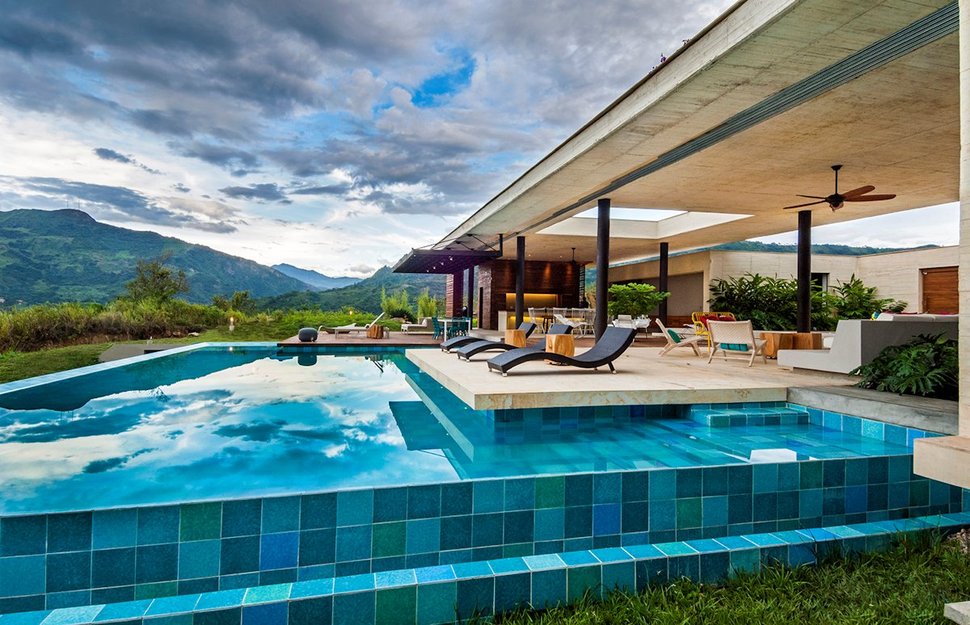
With the Teak panels open, the pool picks up additional reflections of the sky, softening the pixelated story into a more organic expression of the surrounding elements. The location of the pool is such that it has permanent exposure to the sun and therefore constant reflections of the sky above.
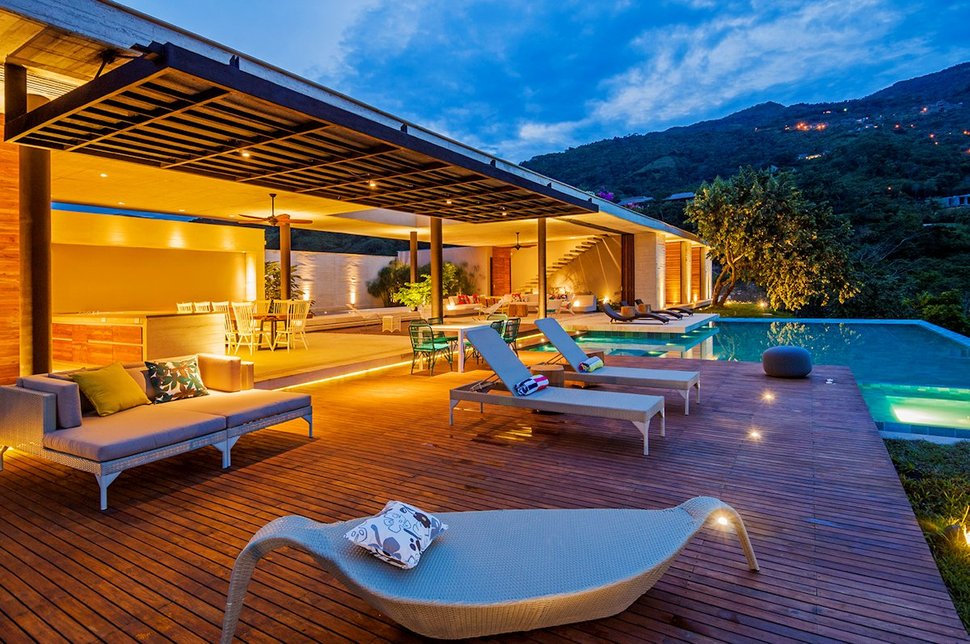
The architects addressed sustainability in the design of Casa 7A by orienting the hoeme on a north south scheme to minimize direct solar gain. The open air concept also allows for uninterrupted cross ventilation to all areas – both private and social and minimizes the need for air conditioning.

A solar panel heating system is used for the water within the swimming pool and rainwater is collected for the cultivated plants.

The choice of a flat roof not only provides a roof top deck, but also creates further insulation from the sun with its ventilated waffle slab and upper white gravel finish.
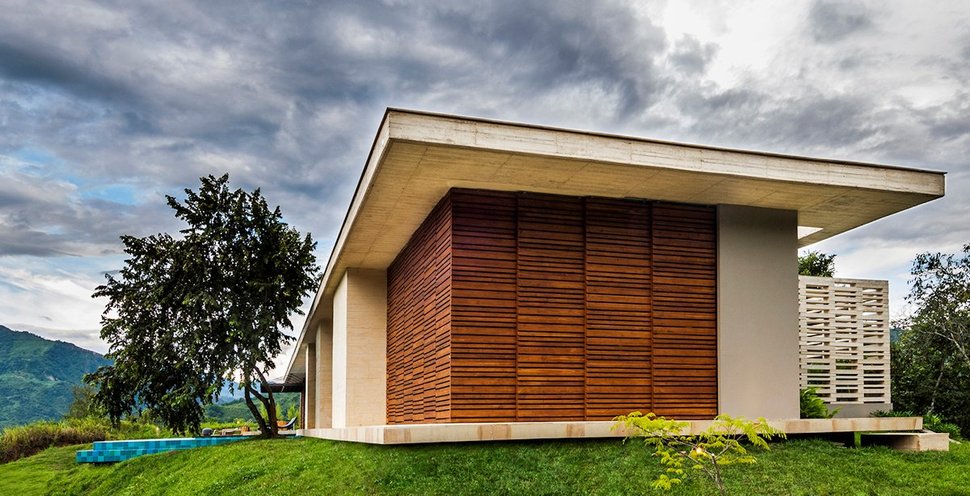
The construction crew was local and the majority of construction materials are local as well, consisting of such natural elements as stone, concrete and renewable timber, even the concrete formwork was built with the local sustainable wood Tabebuia.
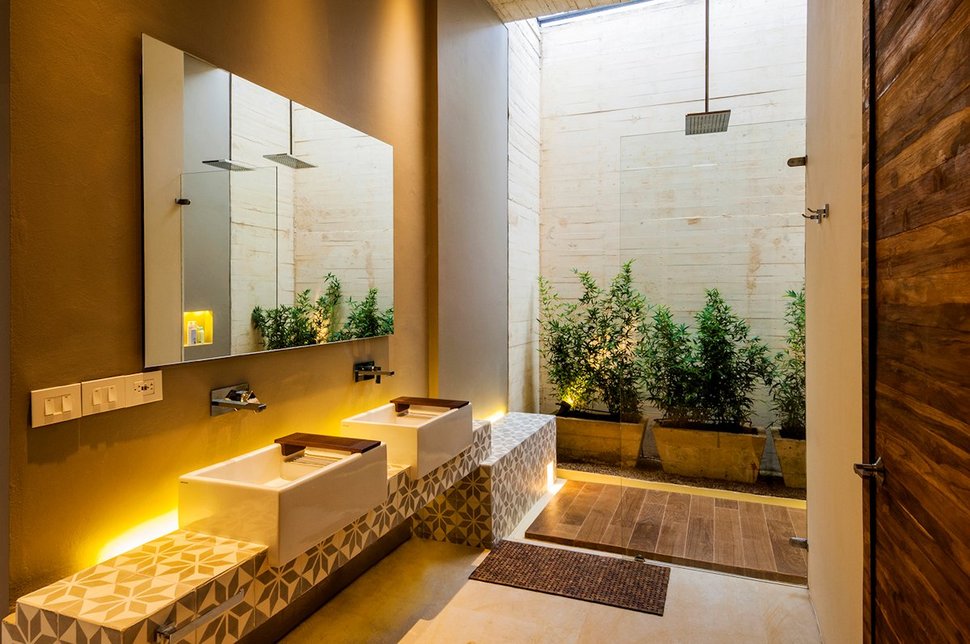
Nowhere is the celebration of natural materials more prevalent then in the washrooms. Even the patterned tiles are made from concrete while the open air shower celebrates nature with a row concrete planters filled with evergreen shrubs.
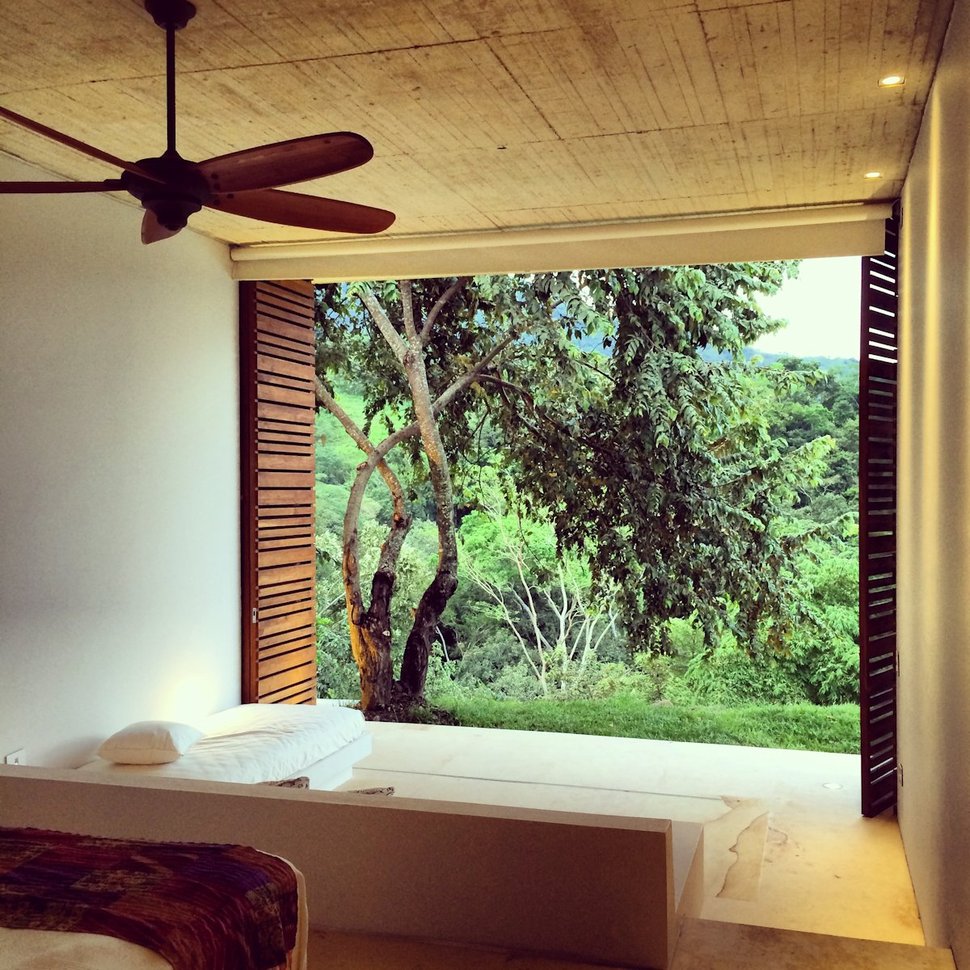
Three bedrooms run in line behind the living room, each with its own bathroom and terrace. 2 are small guest rooms while the third is the Master Suite located on the far end of the home.
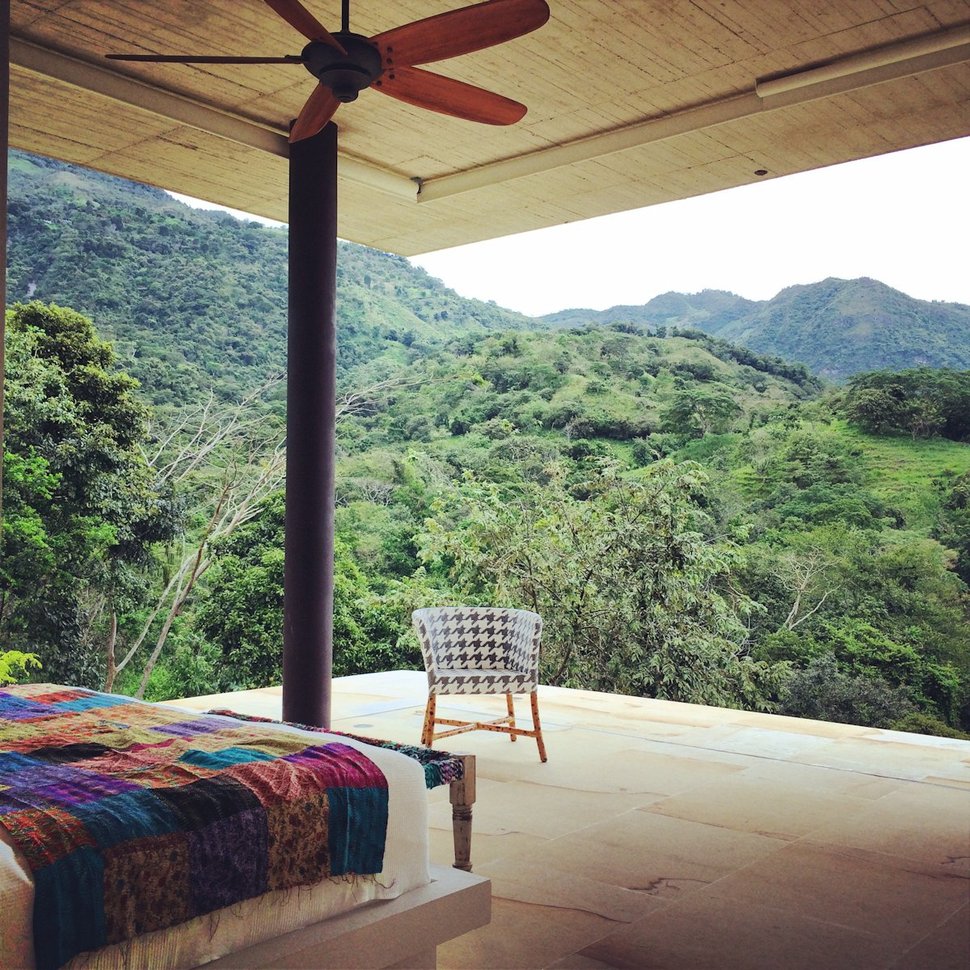
The master bedroom has a stunning view of the mountainside and, since it is located on the far end of the home, maintains a privacy within its open air walls.
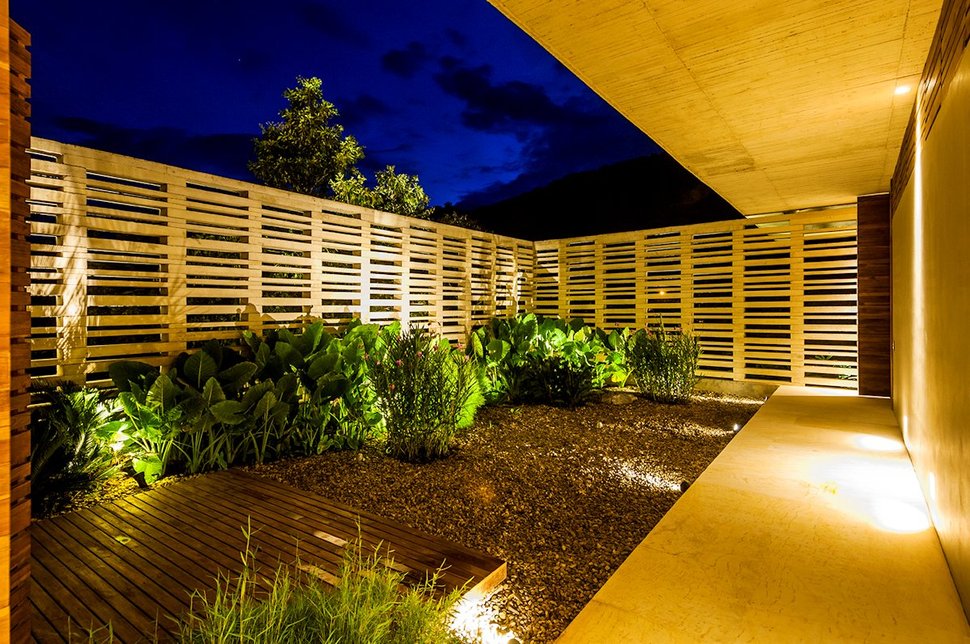
All three bedrooms have access to a courtyard filled with native plantings in the front of the home and a concrete sidewalk, running the length of the home connects all three bedrooms to the rest of the home.

The courtyard stops just shy of the foyer at the location of an enclosed mudroom and bathroom wrapped in the same sustainable Teak wood used on the rest of the home’s sliding panels. The courtyard itself is wrapped in prefabricated concrete blocks for a peak a boo view to the
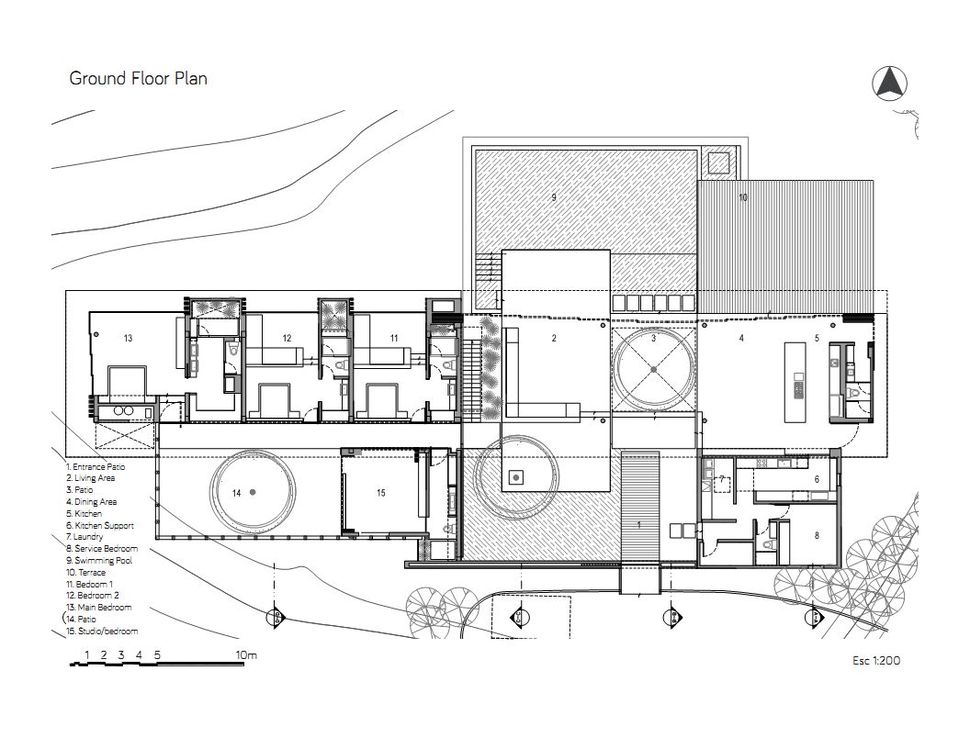
Casa 7A is organized through a series of solids and voids that open towards the mountainside views on one side and to a private courtyard or water feature on the other. The private zone has its own west wing while the service areas are located on the east, behind the kitchen wall.

Arquitectura en Estudio
Photography by David Uribe
